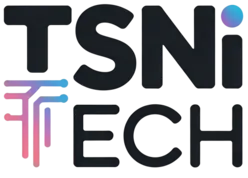If You Give Birth at Disney, Do You Get a Lifetime Pass?
The Myth of Lifetime Passes for Babies Born at Disney
A persistent urban legend claims that babies born in a Disney park receive a free lifetime pass. This compelling story has circulated for decades, but it’s entirely false.
Disney officials have repeatedly debunked this myth—the company simply doesn’t award lifetime passes to children born on its properties. While staff will certainly arrange emergency transport to a hospital, no policy exists to reward such extraordinary events with complimentary park access.
The misconception likely stems from the first documented birth at Disneyland on July 4, 1979. Teresa Albedo’s arrival generated considerable media buzz, yet no contemporary reports ever mentioned a lifetime pass.
The likely explanation: Cast Members may have presented the Albedo family with a commemorative Disney birth certificate—a thoughtful keepsake. Over the years, as the story spread through countless retellings, this souvenir certificate was likely transformed into “evidence” of a lifetime pass.
Disneyland’s First Birth: Teresa Albedo
Teresa Albedo holds the distinction of being the first documented birth at a Disney park. On July 4, 1979, her mother went into labor on Main Street, U.S.A. at Disneyland—perfect patriotic timing!
Labor progressed remarkably quickly. There was simply no time to reach a hospital, so Disney Cast Members stepped in to assist with the delivery right there in the park.
Childbirth Policies at Disney Parks
Disney parks focus on creating magic, not delivering babies—they lack dedicated birthing facilities entirely. While First Aid stations employ nurses and EMTs, their equipment handles minor injuries and illnesses, not the complexities of childbirth.
When unexpected labor begins, the protocol is straightforward: contact emergency services immediately for hospital transport. Cast Members provide essential support until medical professionals arrive, with one unwavering priority—the safety of both mother and child.
Other Births at Disney Parks: What to Know
Though Teresa Albedo’s 1979 birth remains the most celebrated, other documented births have occurred at Disney parks:
-
1984: A child was born at Disneyland’s First Aid center.
-
1997: A baby girl was born at Magic Kingdom in Walt Disney World.
-
2002 & 2012: Two other births were documented with fewer public details.
Importantly: not one of these families received a lifetime pass, definitively debunking the persistent myth.
The odds of giving birth at a Disney park remain extraordinarily low, thanks to two practical factors:
Advice for Expectant Mothers Visiting Disney
Pregnant guests planning a Disney adventure should focus on safety by reviewing attraction advisories, which clearly identify rides that may pose risks.
While high-speed thrills and intense attractions are off-limits, expectant mothers can still embrace countless magical park experiences:
The parks also feature dedicated, comfortable, air-conditioned Baby Care Centers. These havens offer private nursing rooms, changing stations, and comfortable seating areas—perfect sanctuaries for taking a well-deserved break.
If visiting while pregnant, particularly in the third trimester, consider these recommendations:
Consult your healthcare provider before embarking on your Disney journey. Discuss any pregnancy-specific concerns together. Always prioritize proper medical care and follow your doctor’s guidance regarding travel during pregnancy.
The Role of Social Media in Spreading Myths
Social media platforms like TikTok and Instagram have accelerated this myth’s spread, allowing the factually incorrect urban legend to reach millions through viral posts.
Social media’s algorithmic design social media’s algorithmic design reinforces such myths. When users engage with Disney birth stories—through likes, comments, or shares—platforms serve similar content to broader audiences, creating self-reinforcing echo chambers.
The myth’s rapid spread consistently outpaces fact-checking efforts. Its emotional appeal makes it remarkably resistant to correction, persisting despite Disney’s clear lack of such a policy.
Beyond innocent sharing, some creators deliberately craft posts about the myth purely to generate engagement. This shows how social media narratives can powerfully shape public belief, often overshadowing official communications and forcing brands to actively manage their digital reputation.


